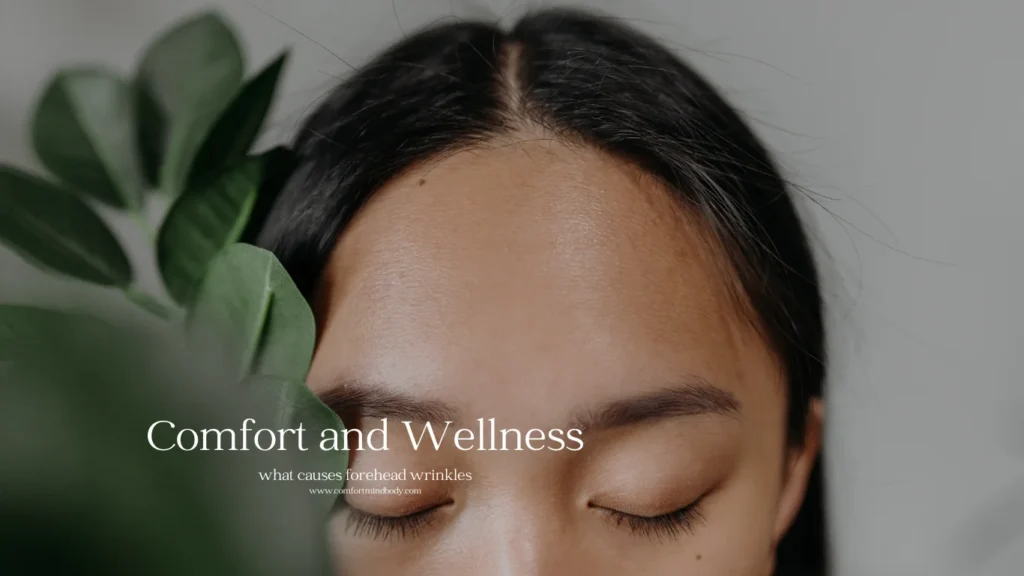Table of Contents
ToggleIntroduction:
What causes forehead wrinkles? Forehead wrinkles are a common concern for many. They are often seen as a sign of aging. However, they can also be a result of various other factors.
In this comprehensive guide, we delve into the causes of forehead wrinkles. We also explore the various treatment options available. Our focus is on providing you with the information you need.
This will help you make informed decisions about your skincare and treatment choices. Forehead wrinkles can be caused by a combination of genetic and environmental factors.
Sun exposure, for instance, is a significant contributor. Repetitive facial expressions can also lead to permanent lines on the forehead. Loss of skin elasticity and collagen production with age can cause wrinkles too.
Lifestyle choices, such as smoking, can accelerate the aging process and lead to premature wrinkles. On the other hand, a healthy diet rich in antioxidants can help prevent skin damage.
What Causes Forehead Wrinkles And How To Treat Them
Importantly, proper hydration is essential for maintaining skin elasticity. Regular use of sunscreen can protect the skin from harmful UV rays. Botox is a popular treatment for reducing the appearance of forehead wrinkles.
It works by temporarily paralyzing the muscles that cause wrinkles. Results from Botox can typically be seen within a few days to two weeks. The effects of Botox usually last between three to six months.
Before and after photos can demonstrate the effectiveness of Botox treatments. It’s important to choose a qualified and experienced practitioner for Botox injections. Side effects of Botox can include bruising, swelling, or a headache.
In the following sections, we will delve deeper into these topics. We aim to provide you with a comprehensive understanding of forehead wrinkles and their treatment options.
Understanding Forehead Wrinkles
What causes forehead wrinkles?
Forehead wrinkles, also known as forehead lines, are a common sign of aging. They appear as horizontal lines across the forehead. These lines can become more pronounced with age.
They can also be more noticeable when you raise your eyebrows or make certain facial expressions. Understanding the causes of forehead wrinkles requires a basic understanding of the skin’s structure.
The skin on your forehead is similar to skin elsewhere on your body. However, the muscles beneath the skin on your forehead are unique. These muscles are responsible for the formation of forehead wrinkles.
The Anatomy of the Forehead and Skin
The skin is the body’s largest organ. It serves as a protective barrier against environmental factors. The skin is made up of three layers: the epidermis, dermis, and subcutaneous tissue.
The epidermis is the outermost layer of the skin. It provides a waterproof barrier and creates our skin tone. The dermis, beneath the epidermis, contains tough connective tissue, hair follicles, and sweat glands. The deeper subcutaneous tissue is made of fat and connective tissue.
The Role of Genetics in Forehead Wrinkles
What causes forehead wrinkles?
Genetics plays a significant role in the development of forehead wrinkles. Some people may be genetically predisposed to develop wrinkles at a younger age.
Others may have genes that protect them from developing wrinkles until later in life. Understanding your genetic predisposition can help you take preventative measures.
Environmental Factors Contributing to Forehead Wrinkles
What causes forehead wrinkles?
Environmental factors also contribute to the development of forehead wrinkles. Sun exposure is one of the most significant environmental factors. The sun’s ultraviolet (UV) rays can damage the skin and accelerate the aging process.
This can lead to the formation of wrinkles, including those on the forehead. Other environmental factors include pollution and harsh weather conditions. These can strip the skin of its natural oils, leading to dryness and wrinkles.
Smoking is another environmental factor that can contribute to forehead wrinkles. It can accelerate the aging process by reducing blood flow to the skin, leading to premature wrinkles.
Understanding these factors can help you take steps to protect your skin and prevent forehead wrinkles.
The Science Behind Forehead Wrinkles
What causes forehead wrinkles?
Forehead wrinkles are a result of changes in our skin and muscles as we age. These changes are influenced by various factors, including genetics and environmental exposure.
Understanding the science behind these changes can help us find effective ways to treat and prevent forehead wrinkles. One of the key factors in the formation of wrinkles is the loss of skin elasticity.
Elasticity refers to the skin’s ability to stretch and return to its original shape. As we age, our skin naturally loses some of its elasticity.
This loss of elasticity can lead to the formation of wrinkles, including those on the forehead.
How Skin Loses Elasticity Over Time
The loss of skin elasticity is a natural part of the aging process. It is primarily caused by a decrease in the production of two key proteins: collagen and elastin.
Collagen gives structure to the skin. Elastin helps the skin return to its original shape after being stretched. As we age, our bodies produce less of these proteins. This leads to a loss of skin elasticity and the formation of wrinkles.
Same goes for neck wrinkles!
The Impact of Collagen and Hyaluronic Acid
What causes forehead wrinkles?
Collagen is the most abundant protein in our bodies. It provides structure and strength to our skin. However, as we age, collagen production decreases.
This leads to a loss of skin firmness and the formation of wrinkles. Hyaluronic acid is another important component of the skin. It is a sugar molecule that can hold up to 1,000 times its weight in water.
This makes it a key player in maintaining skin hydration and volume. However, like collagen, hyaluronic acid levels decrease with age.
This can lead to dryness, loss of volume, and the formation of wrinkles, including those on the forehead.
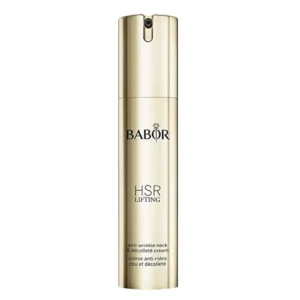
Babor - Anti-Wrinkle Neck & Decolleté Cream 50ml
Key Ingredient: Panthenol (B5) and Shea Butter
Common Causes of Forehead Wrinkles
What causes forehead wrinkles?
Forehead wrinkles are a common sign of aging. However, they can also be influenced by a variety of other factors. Understanding these factors can help us take steps to prevent or reduce the appearance of forehead wrinkles.
Sun Exposure and UV Damage
One of the main causes of forehead wrinkles is sun exposure. The sun’s ultraviolet (UV) rays can damage the skin, leading to premature aging.
This damage can result in the formation of wrinkles, including those on the forehead. It’s important to protect your skin from the sun to prevent this damage.
Facial Expressions and Muscle Contractions
Another common cause of forehead wrinkles is repetitive facial expressions. When we make the same facial expressions over and over, it can lead to permanent lines on our forehead.
These lines are often referred to as “expression lines” or “dynamic wrinkles”. Reducing the frequency of these expressions can help prevent the formation of these wrinkles.
Lifestyle Factors: Diet, Smoking, and Hydration
Lifestyle factors can also contribute to the formation of forehead wrinkles. These factors include:
- Poor diet: A diet lacking in essential nutrients can lead to skin damage and wrinkles.
- Smoking: Smoking can accelerate the aging process and lead to premature wrinkles.
- Dehydration: Lack of hydration can make the skin dry and more prone to wrinkles.
Making healthy lifestyle choices can help prevent the formation of forehead wrinkles.
Stress and Sleep: The Overlooked Contributors
What causes forehead wrinkles?
Stress and lack of sleep are often overlooked contributors to forehead wrinkles. When we’re stressed or not getting enough sleep, it can lead to changes in our skin. These changes can include:
- Increased production of cortisol, a stress hormone that can break down collagen.
- Decreased production of growth hormone, which is released during sleep and helps repair and renew the skin.
Managing stress and getting enough sleep can help maintain skin health and prevent wrinkles.
Preventative Measures for Forehead Wrinkles
Preventing forehead wrinkles involves a combination of skincare routines, sun protection, and healthy habits. By taking proactive steps, you can help maintain your skin’s elasticity and slow down the formation of wrinkles.
Skincare Routines to Maintain Elasticity
A good skincare routine is essential for maintaining skin elasticity and preventing wrinkles. This routine should include:
- Cleansing: Remove dirt and impurities from your skin daily.
- Exfoliating: Regularly remove dead skin cells to promote new cell growth.
- Moisturizing: Keep your skin hydrated to maintain its elasticity.
- Using anti-aging products: Products with ingredients like retinol can help reduce the appearance of wrinkles.
Remember, consistency is key when it comes to skincare.
The Importance of Sun Protection
Sun protection is crucial in preventing forehead wrinkles. The sun’s UV rays can damage the skin, leading to premature aging and wrinkles. To protect your skin, you should:
- Wear sunscreen: Apply a broad-spectrum sunscreen with an SPF of at least 30 every day.
- Wear protective clothing: Wear a wide-brimmed hat and sunglasses when you’re out in the sun.
- Seek shade: Try to stay in the shade during the sun’s peak hours, usually between 10 a.m. and 4 p.m.
Remember, sun damage can occur even on cloudy days, so it’s important to protect your skin year-round.
Healthy Habits: Diet, Exercise, and Sleep
Healthy habits can also play a significant role in preventing forehead wrinkles. These habits include:
- Eating a healthy diet: A diet rich in antioxidants can help protect your skin from damage.
- Regular exercise: Exercise can improve circulation and help nourish skin cells.
- Getting enough sleep: During sleep, your body repairs and renews your skin.
By adopting these healthy habits, you can help maintain your skin’s health and prevent the formation of forehead wrinkles.

Reusable Silicone Wrinkle Removal Stickers
Smooth and rejuvenate your skin with Reusable Silicone Wrinkle Removal Stickers. These versatile patches target wrinkles on the face, forehead, neck, and eyes for effective anti-aging and lifting.
Non-Invasive Treatments for Forehead Wrinkles
What causes forehead wrinkles?
Non-invasive treatments can be an effective way to reduce the appearance of forehead wrinkles. These treatments range from topical applications to professional skincare procedures. They can offer significant improvements without the need for surgery or injections.
Topical Treatments: Retinoids, Peptides, and Antioxidants
Topical treatments can be a simple and effective way to reduce forehead wrinkles. These treatments include:
- Retinoids: These vitamin A derivatives can stimulate collagen production and speed up cell turnover.
- Peptides: These small proteins can stimulate collagen production and help repair skin damage.
- Antioxidants: These substances can protect the skin from free radical damage and promote skin health.
By incorporating these ingredients into your skincare routine, you can help reduce the appearance of forehead wrinkles.
Luxury Anti-aging Skincare

EXCIA EMBEAGE Cream Parfait
Try EXCIA EMBEAGE Cream Parfait. This luxurious cream is full of high-quality ingredients. It hydrates and revitalizes your skin. Your skin will feel softer, more supple, and look radiant. The name reflects a commitment to timeless beauty.
Luxury Anti-aging Eco-Friendly Skincare
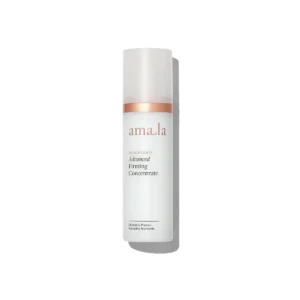
Advanced Firming Concentrate
- Helps to even out skin tone and gradually minimize visible signs of pigmentation
- Supports the skin’s protection against free radicals and environmental stressors
- Brightens refines skin tone, and softens fine lines for a dewy, glowing complexion
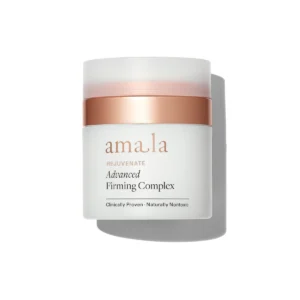
Advanced Firming Complex
- Dramatically improves the look of firmness and elasticity
- Diminishes the appearance of wrinkles depth, and common signs of aging
- Replenishes moisture for smooth, supple, and even-toned skin
The Role of Professional Skincare: Peels and Facials
What causes forehead wrinkles?
Professional skincare treatments can offer more significant improvements in the appearance of forehead wrinkles.
These treatments include chemical peels and facials. Chemical peels can remove the outer layer of skin to reveal fresher, smoother skin underneath.
Facials can cleanse, exfoliate, and nourish the skin, promoting a clearer and more youthful complexion.
Laser Therapy and Microneedling
Laser therapy and microneedling are other non-invasive treatments that can reduce forehead wrinkles. Laser therapy uses light energy to stimulate collagen production and improve skin texture.
Microneedling involves creating tiny punctures in the skin to stimulate the body’s natural healing process and promote collagen production.
Both treatments can offer noticeable improvements in the appearance of forehead wrinkles.
The Benefits of Facial Exercises and Massage
What causes forehead wrinkles?
Facial exercises and massage can also help reduce forehead wrinkles. These techniques can:
- Improve circulation: This can help nourish skin cells and promote skin health.
- Tone muscles: This can help reduce the appearance of wrinkles.
- Promote relaxation: This can help prevent the formation of stress-related wrinkles.
By incorporating facial exercises and massage into your routine, you can help maintain a youthful and wrinkle-free complexion.

ECO FACE PLATINUM LED MASK
- Technology: 120 LED lights for full face coverage (60 red + 60 near-infrared).
- Easy to Operate: Lightweight, portable, one-button control.
- Recommended Usage: 10 minutes per day, 3-4 times per week.
- Maximum Usage: 20 minutes daily.
- Sustainability: Rechargeable, no single-use components.
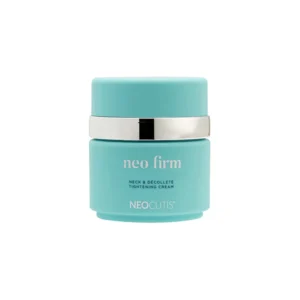
Neocutis NEO FIRM Neck & Decollete Tightening Cream
Neocutis NEO FIRM® (formerly MICRO FIRM) is a special cream for your neck. It hydrates your neck and décolleté areas. This cream has many strong ingredients. Glycolic acid gently exfoliates your skin and helps reduce discolorations.
This makes your skin smoother and brighter. Its unique peptides help build collagen types III and VII. This reduces lines and wrinkles. Sodium carboxymethyl beta glucan firms and shapes your neck and décolleté.
Vitamin C and beetroot extract strengthen your skin. They also protect it from environmental stress. A mix of glycerin and natural oils softens your skin. The neck often shows signs of aging first. Neocutis NEO FIRM® can help fight these signs. It also hydrates the delicate skin of your neck and décolleté.
Botox for Forehead Wrinkles:
Botox is a popular treatment option for forehead wrinkles. It offers noticeable improvements in the appearance of wrinkles. However, it’s important to understand how it works, what to expect, and potential side effects.
How Botox Works to Reduce Wrinkles
Botox works by temporarily paralyzing the muscles that cause wrinkles. It does this by blocking the signals from the nerves to the muscles. As a result, the injected muscle can’t contract, which causes the wrinkles to relax and soften.
Realistic Expectations: Botox Before and After
It’s important to have realistic expectations about the results of Botox treatments. Results can typically be seen within a few days to two weeks.
However, the effects of Botox usually last between three to six months. Maintenance treatments may be necessary to sustain the results.
Before and after photos can demonstrate the effectiveness of Botox treatments.
Choosing the Right Practitioner for Botox
Choosing a qualified and experienced practitioner for Botox injections is crucial. This can ensure the treatment is performed correctly and safely. It’s also important to discuss your treatment goals and any concerns with your practitioner. They can provide you with a personalized treatment plan and address any questions you may have.
Safety and Side Effects of Botox Treatments
While Botox is generally safe, it can have side effects. These can include bruising, swelling, or a headache.
In rare cases, Botox can cause more serious side effects like muscle weakness or vision problems. It’s important to discuss these potential risks with your practitioner before undergoing treatment.
Also, following post-treatment care instructions can help minimize potential side effects.
Alternative Treatments:
What causes forehead wrinkles?
While Botox is a popular choice, it’s not the only treatment available for forehead wrinkles. There are several other options, including dermal fillers, advanced technology treatments, and natural remedies.
Each of these options has its benefits and potential drawbacks.
Dermal Fillers: Types and Results
Dermal fillers are another option for treating deeper forehead lines. These fillers work by adding volume to the skin, which can smooth out wrinkles.
There are several types of dermal fillers, including hyaluronic acid fillers and collagen fillers. The results of dermal fillers can last from six months to two years, depending on the type of filler used.
Advances in Technology: Ultrasound and Radiofrequency
What causes forehead wrinkles?
Advances in technology have led to new treatment options for forehead wrinkles. Ultrasound and radiofrequency treatments can stimulate collagen production, improving the skin’s elasticity and reducing wrinkles.
These treatments are non-invasive and typically require little to no downtime. However, they may require multiple sessions to achieve the desired results.
- Ultrasound treatments use sound waves to heat the skin, stimulating collagen production.
- Radiofrequency treatments use energy to heat the skin, promoting collagen and elastin production.
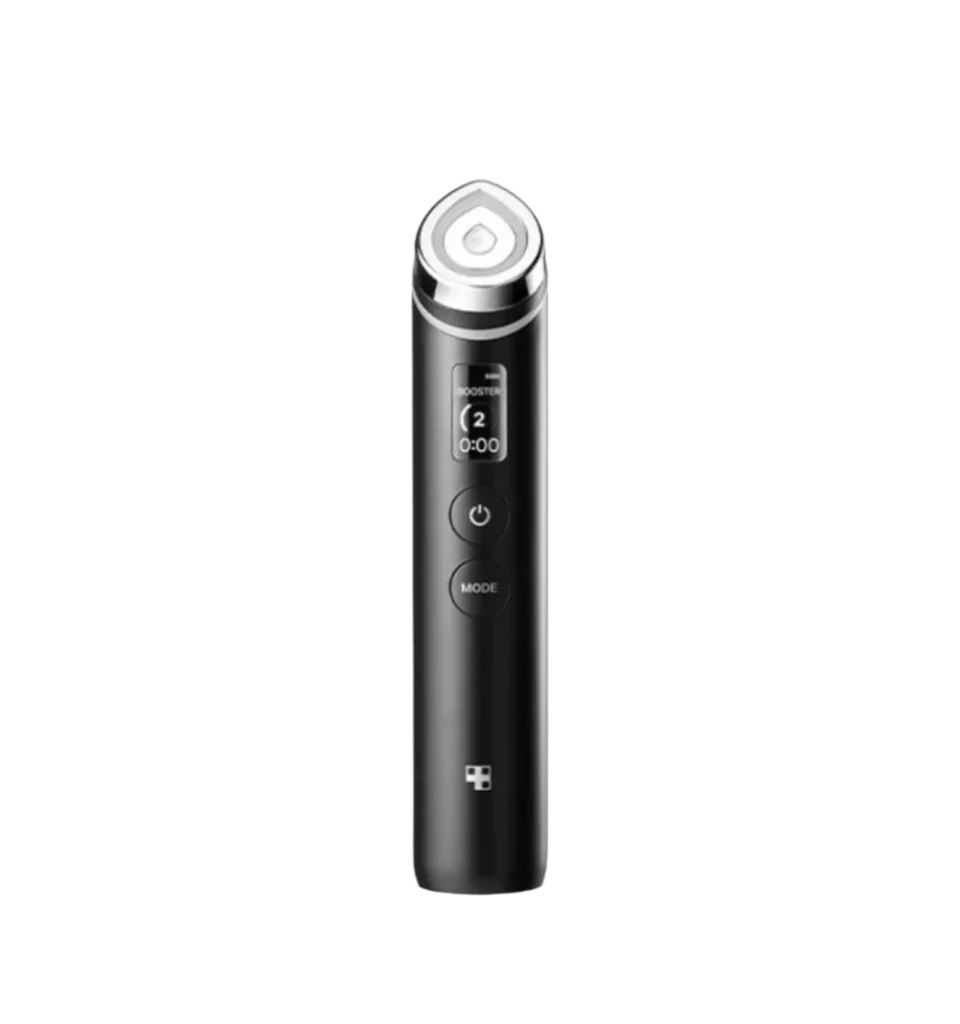
MEDICUBE AGE-R Booster Pro
Medicube’s AGE-R Booster Pro is a 6-in-1 beauty device that uses Electroporation, Microcurrent, EMS, Electric needles, LED, and Sonic vibration to enhance skincare. Suitable for all skin types, it improves product absorption, radiance, elasticity, and facial contouring without the need for conductive gel. The device features a skin-contact sensor and can be paired with the AGE-R app for personalized care.
Natural Remedies and Their Efficacy
Natural remedies can also be used to treat forehead wrinkles. These remedies often involve ingredients that can be found in your kitchen, like olive oil, aloe vera, and bananas.
While these remedies can offer temporary improvements, they are not as effective as medical treatments. However, they can be a good addition to your skincare routine.
- Olive oil is rich in antioxidants and vitamins and can help moisturize the skin.
- Aloe vera has healing properties and can help improve skin elasticity.
- Bananas contain vitamins and minerals that can nourish the skin and reduce the appearance of wrinkles.
Conclusion:
What causes forehead wrinkles?
Treating forehead wrinkles is not a one-size-fits-all process. Each individual’s skin is unique, and what works for one person may not work for another. Therefore, it’s important to embrace a comprehensive approach when it comes to treating forehead wrinkles.
This approach should include a combination of preventative measures, skincare routines, and treatments tailored to your specific needs. It’s important to keep a healthy lifestyle. Things like diet, hydration, and sleep can greatly affect your skin’s health.
Remember, the goal is not to erase every line on your face but to enhance your natural beauty and age gracefully. Consulting with a dermatologist or a skincare professional can provide you with a personalized treatment plan.
In the end, the most important thing is to feel comfortable and confident in your skin.
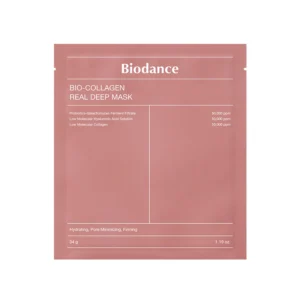
Biodance - Bio-Collagen Real Deep Mask
A hydrating mask with oligo-hyaluronic acid, collagen, and probiotics for pore tightening, elasticity, and a strengthened skin barrier. Safe for sensitive skin.
How to Use
Apply after skincare and leave for 3–4 hours or overnight.
Key Ingredients
Collagen, Hyaluronic Acid, Niacinamide, Probiotics.
Affiliate Disclosure:
The links contained in this product review may result in a small commission. This goes towards supporting our research and editorial team and please know we only recommend high-quality products.
Note: This article is for informational purposes only and is not intended to diagnose, treat, or cure any disease. Always consult a healthcare professional before taking any supplement or making any changes to your diet or lifestyle.
